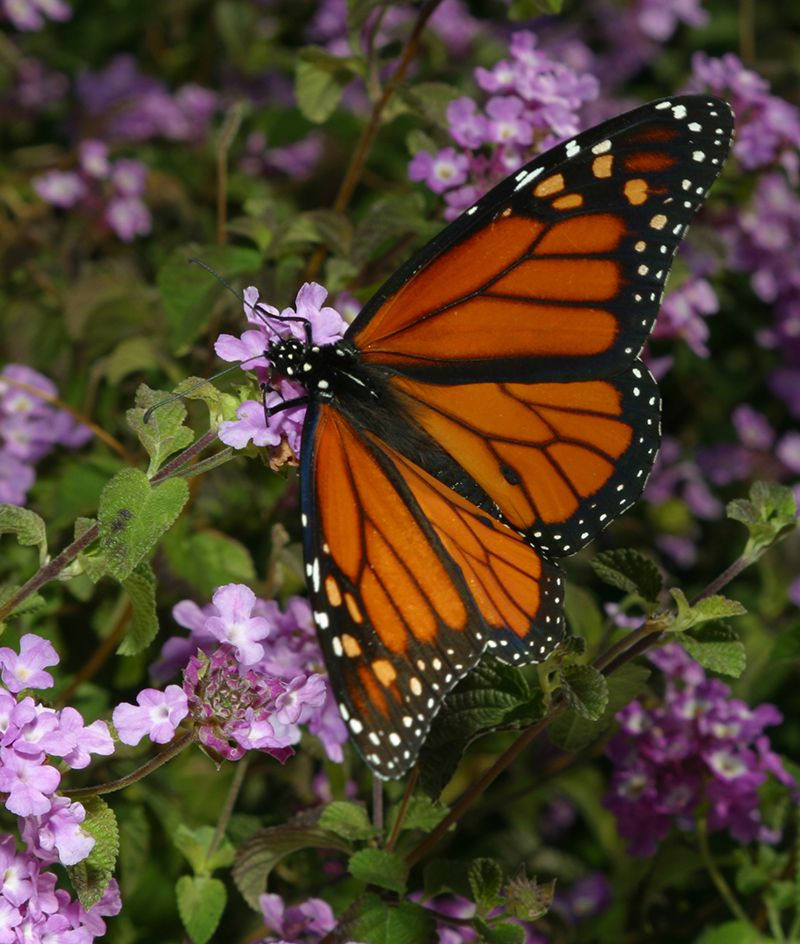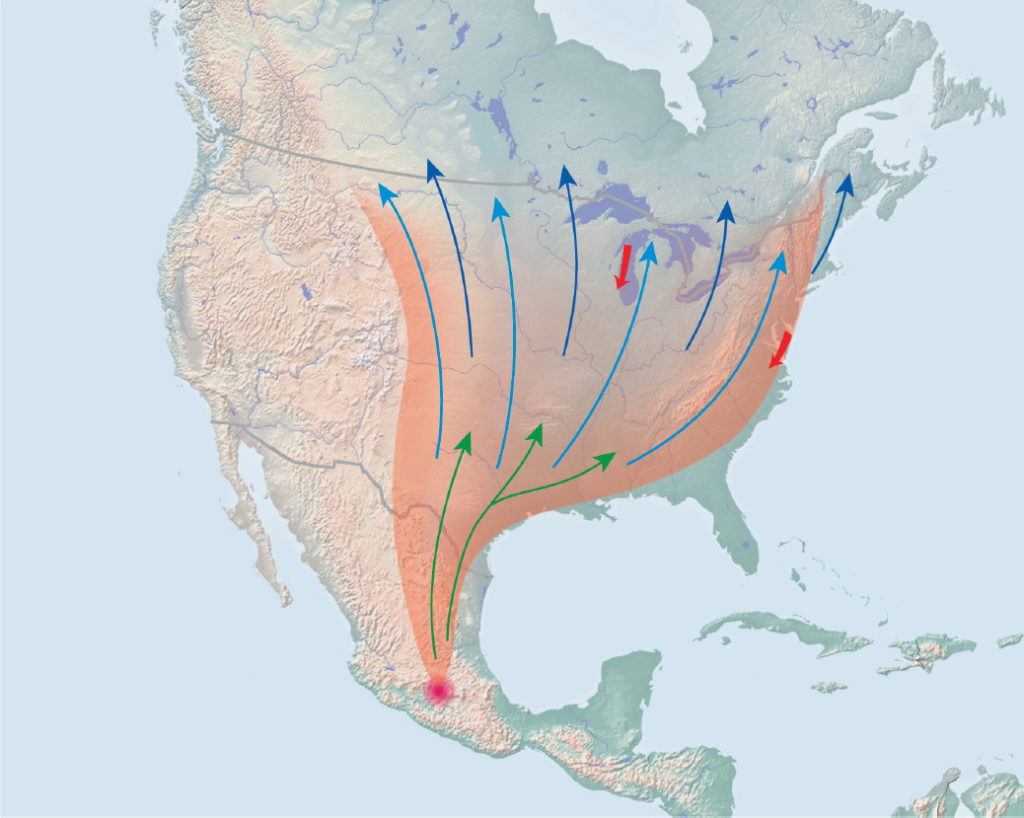
Monarch adults need a variety of flowers, including lantana, for energy as they fly south for the winter. A single monarch typically travels 50-100 miles a day.
In case you haven’t seen your first monarch butterfly of the fall migration, you should start looking now. Mid-October is peak monarch observation month in Texas.
So what is fall migration and why all the fuss about monarch butterflies? Monarchs are one of relatively few insects that have true migration. And one of the few migrant animals who instinctively travel thousands of miles to an overwintering site they have never seen before.
The monarch migration starts each spring with old butterfly adults that have overwintered on a dozen or so mountains in the Mexican states of Mexico and Michoacán, west of the capitol, Mexico City. These mountains provide an ideal overwintering site for resting monarchs. In February each year, these overwintering monarchs leave for the southern U.S. where they will find milkweed plants suitable for their eggs and caterpillars. Here these overwintering monarch adults die, but somehow mysteriously pass on knowledge of the migratory pathways to their offspring. This happens 2-3 more times, all the while they travel further north, until the advent of shorter days and dropping temperatures. These are cues which tell the 4th (or 5th) generation that it’s time to head back to Mexico.

This map shows the annual migratory pathways of the eastern population of Monarch butterflies. Green arrows show Generation 1, followed by second (blue) and third (dark blue). Red arrows indicate the two major fall migratory pathways by which monarchs return to their overwintering home in Mexico.
The citizen science project Journey North provides real time tracking of the monarch migration each year. To see the progress of this year’s migration, click here. And to see a map of historical Texas data on monarch migration, including when they are likely to be in your area, click here.
For more information about the amazing monarch journey, click here to see a great 12 minute video by National Geographic. But don’t just be content with a video. Now’s the time to take a walk and look for monarchs. Chances are that any butterfly you see has already come hundreds of (or even a thousand) miles on its long trip south.